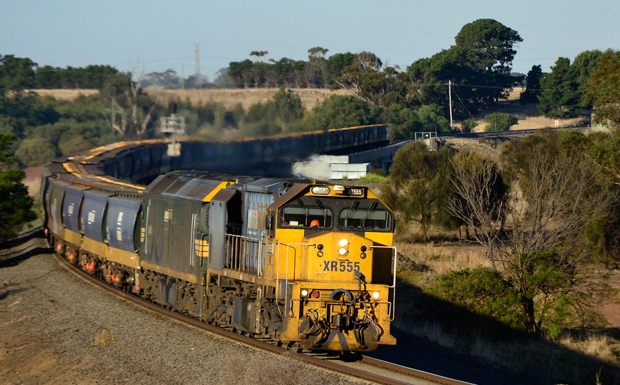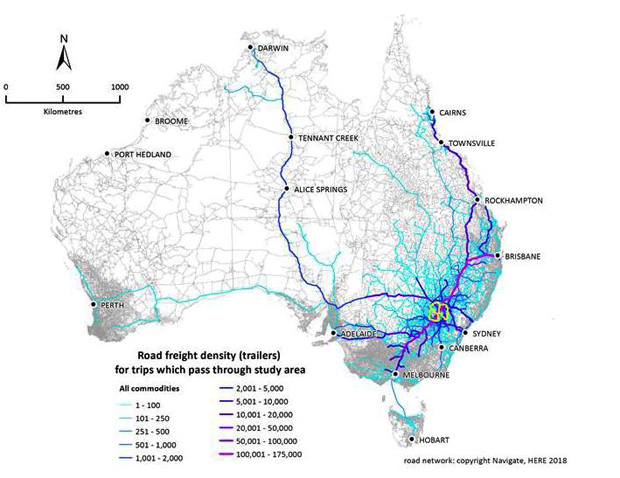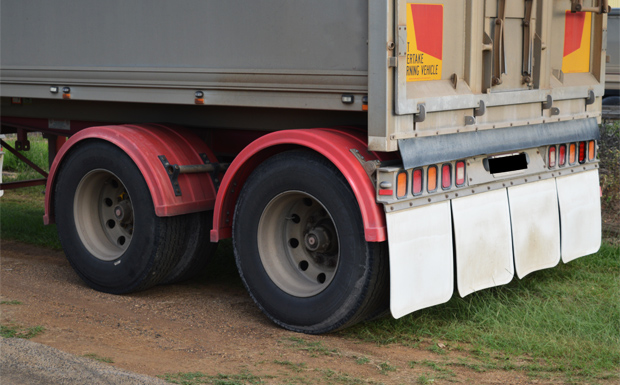
March 21, 2019
CSIRO research into the Melbourne to Brisbane Inland Rail project has determined that shifting horticulture and processed agriculture from road to rail could reduce transport costs for the agricultural industry by an estimated $70 million per year.
The agency conducted a pilot study last year using their computer logistics tool TraNSIT (Transport Network Strategic Investment Tool) as well as liaising with industry.
Their initial research focussed on the Parkes to Narromine section of the route in central west NSW.
Researchers identified a baseline of existing freight movements in this area to estimate the potential transport cost savings for the entire Inland Rail project – the first time a detailed analysis on road to rail supply chains in Australia has been completed.
They considered horticulture and processed agriculture, such as meat, rice and dairy products.
The analysis showed if existing agricultural road trips were shifted to Inland Rail, the agricultural industry could save between $64 to $94 per tonne (depending on back-loading).
This equates to about $70 million in reduced transport costs per year based on the shift of 923,000 tonnes of horticultural and processed agriculture to the lower cost transport option that Inland Rail provides.
Additional analysis revealed that if existing coastal rail trips shifted to inland rail, this would result in an estimated saving of $28 to $35 per tonne.
“Our research has shown that Inland Rail would bring an improvement in rail travel time and transport cost, particularly important when considering perishable products,” CSIRO TraNSIT leader Dr Andrew Higgins said.
“This would make it a lot more competitive with the travel time advantages of road transport.”
Parkes to Narromine was chosen for the case study as it is the first section of track to undergo construction. There’s also a large number of supply chains in this pilot area involving hundreds of stakeholders.
“A big cost in food production is transport, particularly given the large distribution of where and when it is grown across Australia, and the long distances to major domestic markets, often over 1000 kilometres,” Dr Higgins said.
“These type of savings with Inland Rail would mean food companies would have lower cost access to markets further away than they supplied to in the past.
“The benefit is for those selling to market, basically large farming corporations, food companies and those behind processing facilities.
“You’d expect the savings would then be passed back on to farmers.”
The Federal Government has committed $9.3 billion to complete the 1700km rail freight network that will connect Melbourne to Brisbane.
As a next step, TraNSIT will now be applied to the broader Inland Rail corridor (commencing with the southern corridor from Narromine to Seymour) to obtain even more detailed cost savings across a broader range of commodities.
New commodities will include grains, cotton, livestock, wool, minerals and general freight.
TraNSIT has been used in previous research to test the benefits of transport infrastructure in regard to upgrading roads in Northern Australia, and calculating agriculture and forestry transport benefits for industry and various levels of government.
The TraNSIT computer modelling tool works by analysing every possible combination of transport routes and modes (road and rail) and determining those that optimise vehicle movements between enterprises in the agriculture supply chain.
The TraNSIT inland rail results were announced by the Deputy Prime Minister and Minister for Infrastructure, Transport and Regional Development, Michael McCormack in Brisbane on Thursday.

























This route is in large areas of dispute from local farmers to their Councillors and Mayors. State Labor has spoken with these people who have been impacted terribly, announcing they will hold a Commission to investigate this proposal by the Nationals and their much-needed running mates, the Liberals.